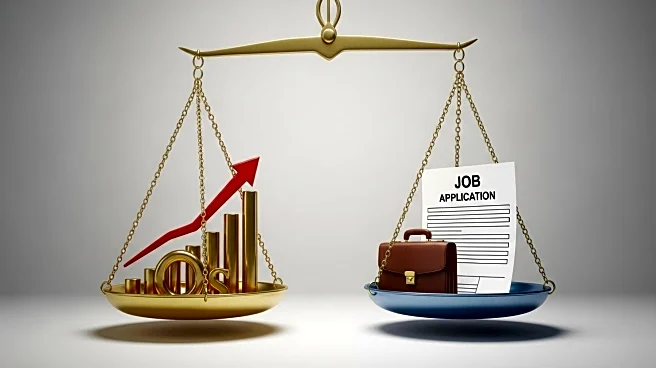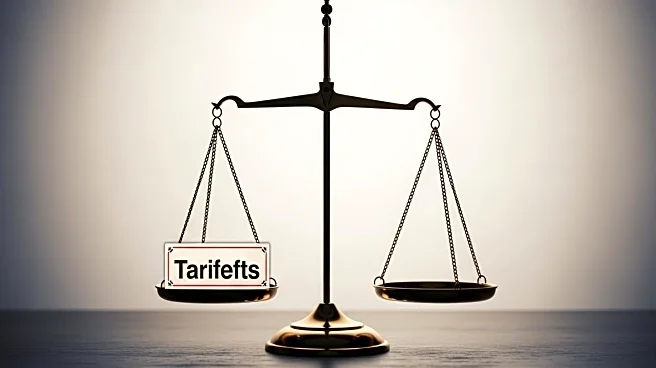What is the story about?
What's Happening?
Moody's economist Mark Zandi has expressed concerns that the Federal Reserve's recent interest rate cut is more hawkish than anticipated and may not be sufficient to address economic risks. The Fed's decision to lower rates by a quarter-point was aimed at managing downside risks to job growth, but Zandi warns that the move may not stave off a potential jobs recession. The Fed's balancing act between inflation and employment challenges is becoming increasingly difficult, with tariffs and tighter immigration rules adding pressure to the economy.
Why It's Important?
The Fed's rate cut is intended to stimulate economic growth, but Zandi's warning highlights the complexities of managing inflation and employment simultaneously. The potential for a jobs recession poses significant risks to the economy, affecting consumer spending and business investment. The Fed's ability to navigate these challenges is crucial in maintaining economic stability and avoiding stagflation. The political pressure on the Fed, particularly with upcoming appointments, could further complicate its decision-making process.
What's Next?
The Fed is expected to follow through with additional rate cuts at its October and December meetings, but the effectiveness of these measures will be closely scrutinized. The appointment of a new Fed Chair next year could influence the central bank's independence and policy direction. The Fed's ability to resist political pressure and maintain its independence will be critical in shaping future monetary policy. The impact of tariffs and immigration rules on the economy will continue to be monitored as potential risks to growth.
AI Generated Content
Do you find this article useful?













